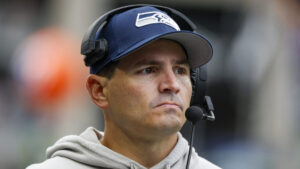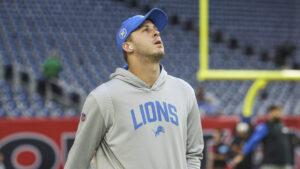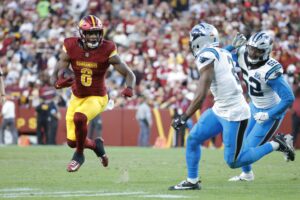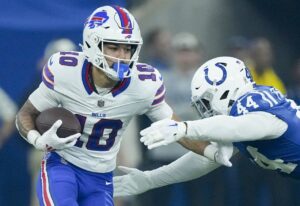The New England Patriots currently find themselves in an unfamiliar situation. As of this posting, the Patriots have just $5.55 million in available cap space, second-lowest in the league. New England normally isn’t this strapped for cash, and some are blaming poor drafts for New England’s current financial state. While the 2016 and 2017 drafts didn’t produce the biggest returns, the Patriots are victims of bad luck more than poor drafting. Even with the minimal impact players, New England’s real financial problems are caused by investing a lot of money in just a few players.
New England Patriots Cap Space Issues Due To Bad Luck, Big Contracts
Absurdly Bad Injury Luck
There’s no denying that the Patriots have not gotten much to date out of their previous three draft classes. Of the players actually drafted, only guard Joe Thuney and running back Sony Michel are full-time starters. What’s more, New England only got a handful of depth players came from those three drafts. At first glance, one would think that the Patriots organization simply struck out on three straight draft classes.
However, that notion couldn’t be further from the truth. The Patriots didn’t have much draft capital in either the 2016 or 2017 draft classes. New England forfeited their first-round pick in 2016 as part of DeflateGate and traded their 2017 first-round pick for wide receiver Brandin Cooks. Cooks was great in 2017 before New England shipped him for an even better first-round pick in 2018.
It’s hard to draft well without first-round picks, but it’s even harder when an absurd amount of injuries hit. 2016 fourth-round pick Malcolm Mitchell looked like a fantastic selection during his rookie year, but a series of knee injuries all-but ended his career. 2017 third-round pick Anthony Garcia had blood clots in his lungs, causing him to miss his entire rookie season. This injury also all-but ended Garcia’s career, as he’s yet to play a professional snap. Fellow 2017 third-round pick Derek Rivers suffered an ACL injury during his rookie preseason and basically spent all of 2018 trying to adjust to the NFL game.
This unfortunate injury luck pales in comparison to what happened to New England’s 2018 draft class. After having minimal draft capital for two straight years, the Patriots made nine selections in 2018. Of those nine, only seventh-round cornerback Keion Crossen survived 2018 without suffering a significant injury. The Patriots won the Super Bowl despite losing the grand majority of their rookie class to injuries.
Top Heavy Contracts
Not having cheap depth is an issue, but the real reason for New England’s minimal cap space is due to a high amount of top-heavy contracts. Miguel Benzan of the Boston Sports Journal beautifully broke down how New England is paying a higher percentage of their cap to their top players than in the past. Per Benzan’s calculations, 56.7% of New England’s cap space is tied up in their 10 highest paid players. That number usually falls in the mid-40’s, with 2014’s 48.8% being the next highest percentage in the past five seasons.
Quarterback Tom Brady and his $27.0 million cap hit lead the way, but players like Stephon Gilmore, Devin McCourty, Rob Gronkowski, and Dont’a Hightower are all on the books for over $10 million in 2019. These players aren’t in danger of losing their jobs, as their play easily justifies their paychecks. However, it’s rare to see New England invest this much money in such a small group of players.
Investing this much money in five players naturally means that cap space will be harder to find. Fortunately, the Patriots should be able to organically increase their cap room while adding young, talented players to the roster.
Why This is a Short-Term Problem
The Patriots enter the 2019 NFL Draft with a staggering 12 picks, including six in the first three rounds. New England has the opportunity to turn these picks into a young, talented, and cost-controlled roster.
In addition to those 12 picks, the Patriots are basically getting their entire 2018 draft class back and healthy. Last years rookies had difficulty staying on the field, but most players looked good when healthy.
First-round running back Sony Michel finished his rookie season with 1,267 yards and 12 touchdowns in 15 games played, counting the postseason. Running back isn’t the most important position in the world, but he has the ability to be New England’s best pure runner since Corey Dillon. Fifth-round pick Ja’Whaun Bentley was New England’s best linebacker before landing on the injured reserve following Week Three. Seventh-round pick Ryan Izzo reportedly would’ve beat out Dwayne Allen for the second tight end spot had he not suffered an ankle injury late in the preseason. Braxton Berrios didn’t do much as a rookie but has the skillset to compete in the slot while Isaiah Wynn should be New England’s starting left tackle in 2019.
This influx will create a surplus of young, cost-controlled talent which will help alleviate New England’s financial strain. Factor in the inevitable extension for quarterback Tom Brady as well as some other cap-increasing moves and the Patriots should be out of financial turmoil in no time. The Patriots are short on cap space, but it’s not due to bad drafting and it isn’t a problem without a solution.
Main photo:
Embed from Getty Images






